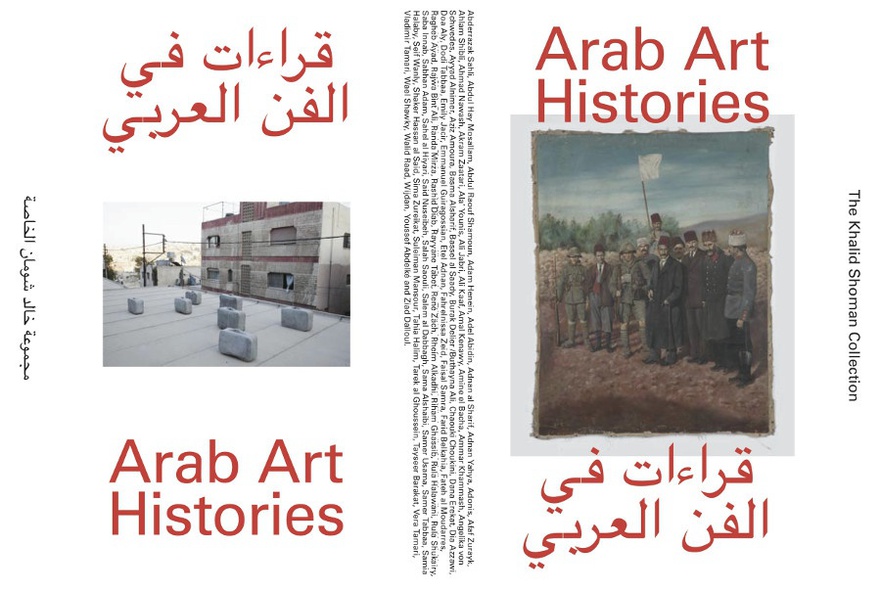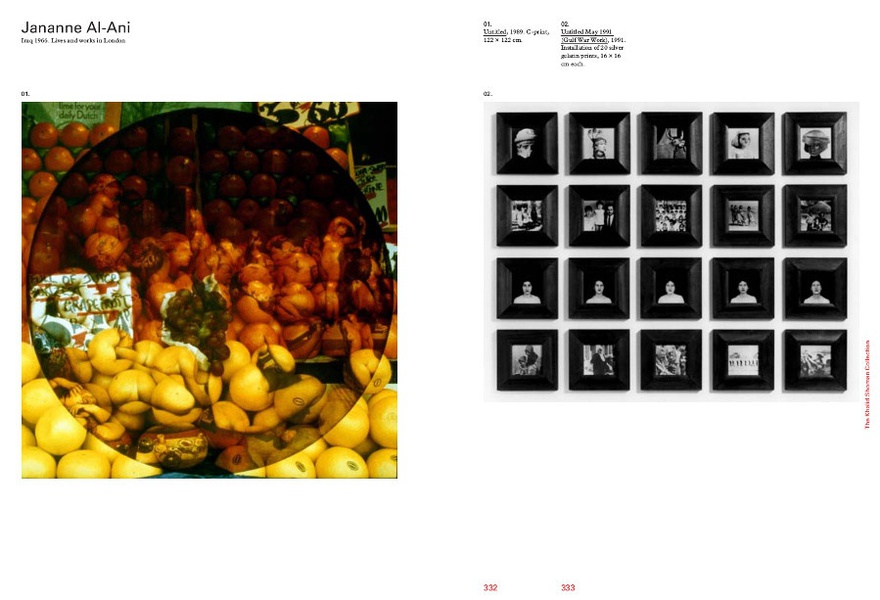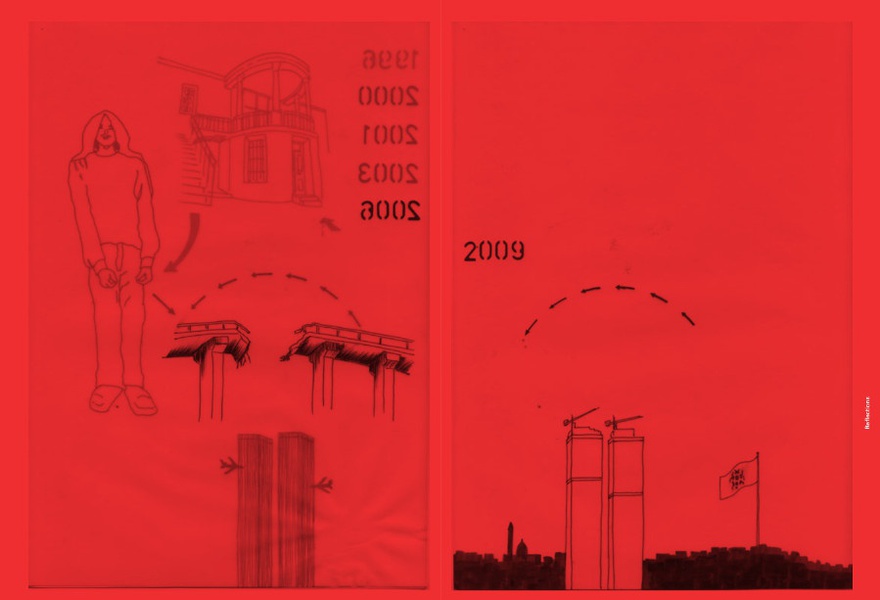Reviews
Arab Art Histories: The Khalid Shoman Collection
Throughout its twenty-five year trajectory, Darat Al Funun has consistently published books, mostly accompanying artist exhibitions. Yet, Arab Art Histories, its latest and largest book to date, is based entirely on its collection of artworks, which account for over 2000 works from across the Arab and international world, and which represents one of the earliest collections dedicated to contemporary art of the Arab world. Alternating between the documentation of works and texts that range from personal reflections and artistic contributions to critical explorations, this impressively thick publication is an unexpectedly engaging book.
Long essays, such as 'The peculiarities of Arab Modernity' by Faisal Darraj, contextualize the political timeframe of production for artists in the collection into selected works from the collection, are intercepted with short, personal excerpts, such as 'Code pink, or ideas form a blue house' by Oraib Toukan, connecting thoughts and experiences to the physical spaces of the foundation itself. Contributions include an eclectic number of voices from the academic and artistic perspectives, from Nada Shabout and Stephan Sheehi, both associate professors in at universities in the USA, to artist Rachid Koraichi. Together, these voices pay tribute to the plurality of narratives, offering an interconnectivity of the different positions and interpretations that activate the artworks. A lateral rather than a linear study into the life of a collection, the range of texts that frame the collection in this book manages to overcome the lifeless cataloguing trap that most publications documenting a collection fall into.
One example of the kind of reflexivity at play within the publication is Hassan Khan's essay, 'The Case Against Continuity, or is it possible to be Enchanted' The piece creates a necessary critical tension by pointing to the problematic of both his position and the historical trajectory presented in the title of the book. Taking the opportunity to re-formulate his thesis on the 'corrupt intellectual', which he has been developing for several years, Khan contextualizes his argument in the invitation to contribute to a book that – on the one hand – celebrates its part in the narrative of Arab art history, simultaneously participating in the production of a canon to perpetuate a discourse. This is juxtaposed with the problematic in assuming his personal engagement with an art historical tradition by way of lineage and identity, fleshing this out through the premise of failed states in which artists and works were implicated and instrumentalized in perpetuating state propaganda during nation-forming years of the last century. Khan then repositions his engagement by assuming that artworks have their own power 'to move beyond the narrow constraints of interpretation.' What he describes as a feeling of hostility, then, seems to be transformed to one of enchantment as he engages with pieces by Farid Belkahia, Fakherelnissa Zeid, and Nadim Kufi among others, tracing rebellion and rupture with the dominant forms of artistic production of their time.
Meanwhile, Anneka Lenssen's 'Distances Greater than Between these Walls: On Ideals and the Constitution of Audience', bases her exploration of varying artistic positions with their public through the site of the café, in the works of artists spanning the second half of the last century. In the first part of her piece, she cites an essay by critical poet and playwright Muhammad al-Maghout published in Al Hiwarmagazine in 1965, entitled 'Sifr 'ala al-yamin, Risalat Dimashq (A Zero on the Right, Damascus Letter)', that chronicles the split between the two arguments of the function of art in the public spheres, against the backdrop of the Cold War and the local Baathist regime's appropriation of culture for nationalist propaganda. Lenssen moves from modern to contemporary works in the collection, in which artists such as Lara Baladi, Hani Alqam and Motaz Nasr, draw the café as a site and space for interrogating contemporary social and political conditions.
Moving from site to body is 'Between the Promise of life and its Fragility: The Arab Body in the Khalid Shoman Collection', by Kirstein Shied, an essay which tackles the 'most fragile, controversial, questionable entities living on the planet today: the Arab body'. Through a wide referencing of works by artists from Sama Al Shaibi's photographic Birth Right Series (2004), to Ismael Shammout Untitled (1984), Ahmad Nawash's The Palestinian Cause; Golda Meir and the Funeral (1973), and Emily Jacir's Where we Come (2003), the author draws on such works to explore how artistic representations of the body, allude to loss or emergence, immobilization or conflation.
Indeed, if you are familiar with Amman's cultural practitioners, you will get the feeling that everyone's voice has been included in the short personal contributions from individuals who have been involved in Darat Al Funun over the decades, in one form or another, since its inception. These are mainly articulated in encounters with the site and spaces of the buildings of the foundation. Emily Jacir describes the awe she felt upon her first visit to the site while a young student in the 1990's, not knowing she would one day present her own solo show there in 2013. Samar Dudin's heartfelt piece, When Will my Story be Told? reminisces on a series of works she created in theater, and the ones she has yet to complete.
Among these, one of these contributions stood out. Across several pages, a series of simple drawings juxtaposed with one another come together like sketches in a game of Pictionary to form Raed Ibrahim's Tracing Time, which contextualizes the collection presented in this book, within a political trajectory. On one page, the facade of Darat Al Funun's main building is shown, with arrows drawn over it to indicate the entrance and exit to the space, and the date, 1993. On another, a young man standing rigidly to one side, his arms by his sides and a cloth on his head, partially hides his face, while in another image from 2008, we see a pair of towers topped with cranes from the Amman skyline with what seems to be a bridge destroyed in the middle. The famous 2001 silhouette of the twin towers of New York with hijacked planes crashing into them is also included. There is no need to list the events these images allude to, as tied as they are to the very frame of this book, the title of which conjures a string of political events in the last decades that have changed the regional geographic and social structures dramatically.
Arab Art Histories: The Khalid Shoman Collection (eds. Sarah Rogers and Eline van der Vlist; Idea Books; 2013).


















